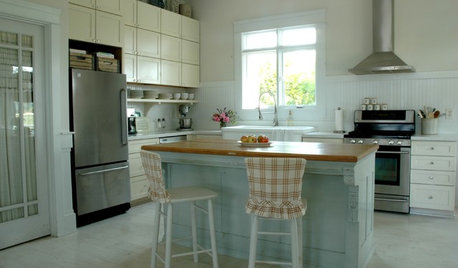Help me Fix My Lawn
youth4him
14 years ago
Related Stories

GARDENING GUIDESHow to Fix Bare and Yellow Lawn Spots
Restore your turf’s good looks by reseeding unsightly patches
Full Story
SELLING YOUR HOUSE5 Savvy Fixes to Help Your Home Sell
Get the maximum return on your spruce-up dollars by putting your money in the areas buyers care most about
Full Story
SELLING YOUR HOUSE10 Low-Cost Tweaks to Help Your Home Sell
Put these inexpensive but invaluable fixes on your to-do list before you put your home on the market
Full Story
GRASSESHow to Rock a Lawn
Weekend Project: The key to healthy grass begins with the soil. If turf works for you, here’s how to fix it and keep it looking its best
Full Story
ORGANIZINGDo It for the Kids! A Few Routines Help a Home Run More Smoothly
Not a Naturally Organized person? These tips can help you tackle the onslaught of papers, meals, laundry — and even help you find your keys
Full Story
KITCHEN DESIGN6 Kitchen Fixes for Nomads
Renting? Some Affordable Ways to Make That Kitchen Feel Like Your Own
Full Story
PRODUCT PICKSGuest Picks: Kentucky Derby Party Fixings and Decor
Get a Derby Day party off to a great start with accessories, serveware and furnishings that champion the cause of chic
Full Story
ARCHITECTUREHouse-Hunting Help: If You Could Pick Your Home Style ...
Love an open layout? Steer clear of Victorians. Hate stairs? Sidle up to a ranch. Whatever home you're looking for, this guide can help
Full Story
SELLING YOUR HOUSEHelp for Selling Your Home Faster — and Maybe for More
Prep your home properly before you put it on the market. Learn what tasks are worth the money and the best pros for the jobs
Full Story
PETSHow to Help Your Dog Be a Good Neighbor
Good fences certainly help, but be sure to introduce your pup to the neighbors and check in from time to time
Full Story









bpgreen
youth4himOriginal Author
Related Professionals
Foothill Ranch Landscape Architects & Landscape Designers · Vernon Hills Landscape Architects & Landscape Designers · Willowick Landscape Architects & Landscape Designers · Manchester Landscape Contractors · Tempe Landscape Contractors · Wilmington Landscape Contractors · Berkeley Heights Landscape Contractors · Cockeysville Landscape Contractors · Fuquay-Varina Landscape Contractors · Kaysville Landscape Contractors · Longmont Landscape Contractors · Ronkonkoma Landscape Contractors · Severna Park Landscape Contractors · Shafter Landscape Contractors · Eastvale Swimming Pool Buildersbpgreen
youth4himOriginal Author
bpgreen
youth4himOriginal Author
bpgreen
youth4himOriginal Author
bpgreen